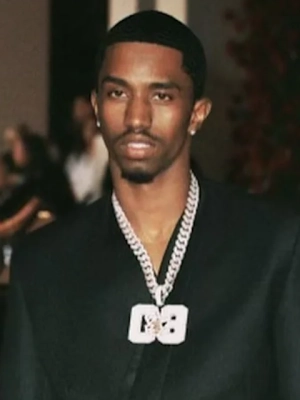 If acting is an addiction, Jared Leto is then a victim. He had shown total commitment in most of his works. Glancing back at his male leading role in "Requiem for a Dream" (2000), little had people known that he was going through an extreme diet and gave up sex with his then fiancee, Cameron Diaz to make himself appear closest to the character Harry Goldfarb, the drug addict. Through this movie, his co-star, Ellen Burstyn was nominated Best Actress in a Leading Role in the 2001 Oscar. Ironically he didn't get any. For Leto personal satisfaction sometimes worth more than praise. "All of my roles have had their own unique set of challenges, and I enjoy that in some perverse, masochistic way," he said.
If acting is an addiction, Jared Leto is then a victim. He had shown total commitment in most of his works. Glancing back at his male leading role in "Requiem for a Dream" (2000), little had people known that he was going through an extreme diet and gave up sex with his then fiancee, Cameron Diaz to make himself appear closest to the character Harry Goldfarb, the drug addict. Through this movie, his co-star, Ellen Burstyn was nominated Best Actress in a Leading Role in the 2001 Oscar. Ironically he didn't get any. For Leto personal satisfaction sometimes worth more than praise. "All of my roles have had their own unique set of challenges, and I enjoy that in some perverse, masochistic way," he said.
Born on December 26, 1971 in Bossier City, Louisiana, Jared Leto had a rather gloomy childhood. Post his parents' divorce, he followed his single mum, Constance and brother, Shannon to live nomadically. His artistic blood eventually delivered him to University of the Arts in Philadelphia and New York's School of Visual Arts to successively study painting and filmmaking. In 1991, he moved to L.A. to seek a better future and only found it three years later after he starred as Claire Danes' object of vague love in the critically acclaimed teen drama series "My So-Called Life" (1994). He would still play opposite Danes in "How to Make American Quilt" (1995) before playing along Christina Ricci in British comedy "The Last of the High Kings" (1996). Already, Leto was on his way to the big league of showbiz.
However, amid the thriving career, he was stumbled by his third big screen movie. If there is a notion 'playing a real life story can be a passage for actors to show fully his or her capability of portraying the character as inspirational individual', it was sadly the other way round for Leto. When the biopic "Prefontaine" about the short life of Steve Prefontaine was made in 1997, he could have easily gained position as top actor like Russell Crowe who beautifully captured the life of John Nash in "A Beautiful Mind" (2001). Despite Leto's physical performance that bore a resemblance to the real person, "Prefontaine" was far from successful. It was very much compared to Billy Crudup's version of Prefontaine in "Without Limits" (1998) which was claimed to be more magnificent.
Switching to a different lane, he gave thriller a shot. In "Switchback" (1997), Leto was a college student deduced as a serial killer. From here, he took a sharp turn to aristocratic epic "Basil" (1998) which was the adaptation of Willkie Colins' novel. Next, his teen look won him a place in popular drama thriller "Urban Legend" (1998). He was then pleased to get a role in the Oscar nominated and star-studded movie taking set in World War 2, "The Thin Red Line" (1998). His following role in "Black and White" (1999) required him to be attractive to gays. Though it was only a portion of the main frame, people began to question his orientation. "I always had an understanding and a connection and a good relationship with gay men and women. And I don't want to censor myself about the fucking subject because I don't have a problem with gay or straight or any of that." But who would doubt his heterosexuality when the list of his love life included beautiful women, like Scarlett Johansson, Cameron Diaz, Ashley Olsen and Lindsay Lohan.
For Leto, playing 'not-too-big' roles was not a problem. Joining Brad Pitt and Edward Norton in gruesome but clever movie "Fight Club" (1999), he was the punch bag along with the other members of the fighting club. He was in a lot more hideous state when a psychotic killer played by Christian Bale slashed him with an axe in "American Psycho" (2000). Refusing to remain being a supporting actor, he positioned himself in his biggest and most challenging role yet in "Requiem for a Dream", a film that invited murmurs from critics because it was horrific. "I don't think [Requiem for a Dream] is for children, but I think if you went home and looked at the video games that your kids are playing, you'd be much more shocked." In 2002, Leto worked again with director David Fincher in "Panic Room" which allowed him to show off his alter ego as the villain who terrorized Jodie Foster. As he was getting more serious with his acting career, he also shared his energy for his band "30 Seconds to Mars" as the front man. Apparently, this brown-eyed actor possessed hidden talent in music too. With his brother Shannon as the drummer, Solon Bixler as the guitarist and Matt Wachter as the bassist, their first self-titled album was out in 2002.
For Leto acting was still equally important. When movie industry was inundated with modern-medieval genre, such as "Gladiator" (2000) and "Troy" (2004), Warner Bros Picture also produced "Alexander" (2004). Leto decided to join the latter and he was in to play Hephaistion. Despite its notable cast, the movie was a disappointment. Meanwhile, his band "30 Seconds to Mars" was climbing its stardom by releasing second album titled "A Beautiful Lie" (2005). Aside from that, Leto began taking heavier characters in biopics. Starting with "Lord of War" (2005), he was Yuri Orlov's younger brother. Next came "Lonely Hearts" (2006), the story of two America's most brutal murderers, Martha Beck and Raymond Fernandez. Playing Fernandez, he'd be teamed with Salma Hayek who played the role Martha. Even more extreme, Leto was bold in mesmerizing himself in the character Mark David Chapman through the movie "Chapter 27" (2007). Chapman was a fanatic fan of The Beatles and the treacherous murderer of John Lennon. Once again Leto showed devotion towards his work. Refusing to wear fat suit, he stuffed himself with plenty of food to resemble the tubby character. Leto's then girlfriend, Lindsay Lohan would play alongside him in this movie.








